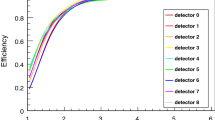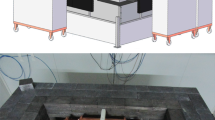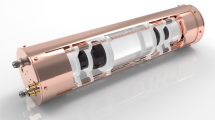Abstract
The DAMA/LIBRA observation of an annual modulation in the detection rate compatible with that expected for dark matter is one of the most puzzling results in the present particle physics scenario. This signal is in strong tension with the negative results of other experiments. However, until recently a direct comparison using the same target material (NaI(Tl)) was lacking. ANAIS (annual modulation with NaI scintillators) is a dark matter direct detection experiment located at the Canfranc Underground Laboratory (LSC, Spain). Its main goal is to test in a model independent way the DAMA/LIBRA positive result. ANAIS-112, consisting of 112.5 kg of NaI(Tl) scintillators, was installed at the LSC in 2017 and since then is taking data smoothly with excellent performances. Here we present the results of the annual modulation analysis corresponding to three years of ANAIS data. These results are compatible with the absence of modulation and in tension with DAMA/LIBRA result. Moreover, they support our goal of reaching a 3\(\sigma\) sensitivity to the DAMA/LIBRA result with about 5 years of data.



Similar content being viewed by others
REFERENCES
M. Tanabashi et al. (Particle Data Group), Phys. Rev. D 98, 030001 (2018).
G. Bertone and D. Hooper, Rev. Mod. Phys. 90, 045002 (2018).
A. K. Drukier, K. Freese, and D. N. Spergel, Phys. Rev. D 33, 3495–3508 (1986).
K. Freese, J. A. Frieman, and A. Gould, Phys. Rev. D 37, 3388–3405 (1988).
R. Bernabei et al., Phys. Lett. B 424, 195 (1998).
R. Bernabei et al., Prog. Part. Nucl. Phys. 114, 103810 (2020).
M. Schumann, J. Phys. G 46, 103003 (2019).
J. Amaré et al., Phys. Rev. Lett. 123, 031301 (2019).
J. Amaré et al., Phys. Rev. D 103, 102005 (2021).
G. Adhikari et al., Nature (London, U. K.) 564 (7734), 83–86 (2018).
G. Adhikari et al., Phys. Rev. Lett. 123, 031302 (2019).
M. Antonello et al., Eur. Phys. J. C 79, 363 (2019).
M. Antonello et al., Eur. Phys. J. C 81, 299 (2021).
G. Angloher et al., Eur. Phys. J. C 76, 441 (2016).
G. Angloher et al., J. Instrum. 12, P11007 (2017).
J. Amaré et al., Eur. Phys. J. C 79, 228 (2019).
D. Cintas et al., arXiv: 2111.09590.
J. Amaré et al., J. Phys.: Conf. Ser. 1468, 012014 (2020).
J. Amare et al., Eur. Phys. J. C 79, 412 (2019).
J. Amaré et al., arXiv: 2110.08109.
I. Coarasa et al., arXiv: 2110.10649.
I. Coarasa et al., Eur. Phys. J. C 79, 233 (2019).
Funding
This work has been financially supported by the Spanish Ministerio de Economía y Competitividad and the European Regional Development Fund (MINECO-FEDER) under grant FPA2017-83133-P, the Spanish Agencia Estatal de Investigación under grant PID2019-104374GB-I00, the Consolider-Ingenio 2010 Programme under grants MultiDark CSD2009-00064 and CPAN CSD2007-00042, the LSC Consortium, and the Gobierno de Aragón and the European Social Fund (group in Nuclear and Astroparticle Physics and Coarasa predoctoral grant). We thank the support of the Spanish Red Consolider MultiDark FPA2017-90566-REDC. Authors would like to acknowledge the use of Servicio General de Apoyo a la Investigación-SAI, Universidad de Zaragoza, and technical support from LSC and GIFNA staff.
Author information
Authors and Affiliations
Corresponding author
Ethics declarations
The authors declare that they have no conflicts of interest.
About this article
Cite this article
Amaré, J., Cebrián, S., Cintas, D. et al. Dark Matter Annual Modulation with ANAIS-112: Three Years Results. Moscow Univ. Phys. 77, 322–326 (2022). https://doi.org/10.3103/S0027134922020667
Received:
Published:
Issue Date:
DOI: https://doi.org/10.3103/S0027134922020667




